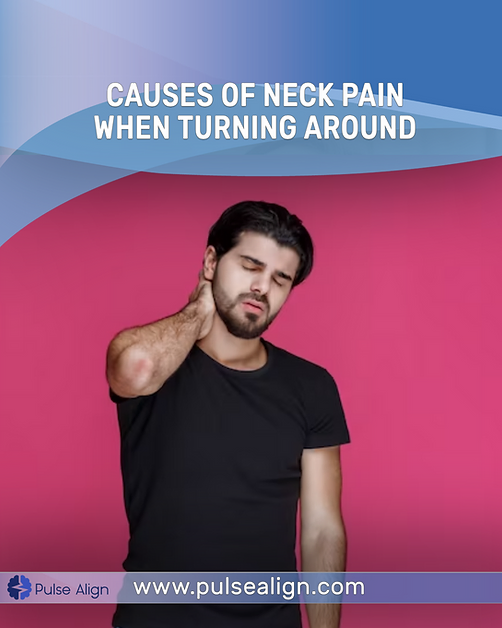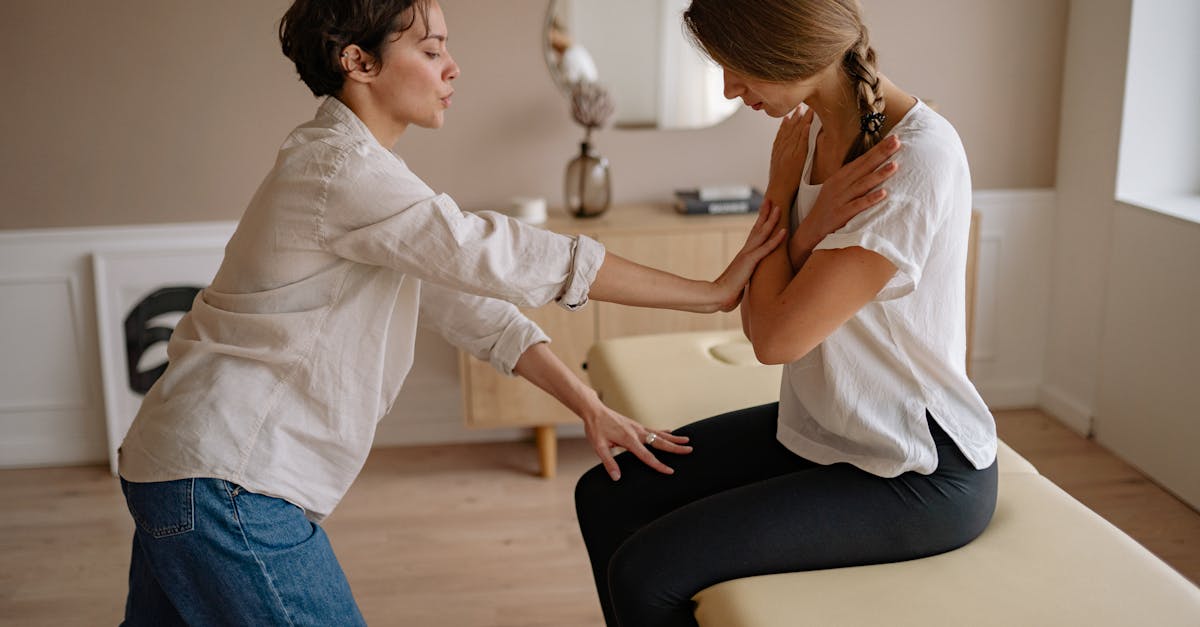Neck pain can be a debilitating experience, especially when it interferes with simple movements like turning your head. The discomfort, stiffness, and limited range of motion can significantly impact your daily life and productivity.
Neck pain is highly prevalent, affecting approximately 1 in 3 individuals annually, with women experiencing it more frequently than men. Typically, the symptoms are benign and resolve spontaneously over time. However, recurrence is common, with the discomfort resurfacing periodically.
In this blog, we’ll delve into the causes of neck pain when turning around, explore potential solutions, and shed light on the holistic approach offered by Pulse Align for addressing root causes rather than merely alleviating symptoms.
Exploring Neck Pain When Turning Around
Neck pain when turning around, medically termed cervicalgia, can arise from various sources, ranging from muscular strain to underlying medical conditions. It’s essential to understand the potential triggers to effectively manage and alleviate discomfort.
Common Causes of Neck Pain When Turning Around
Muscle Strain: One of the most prevalent reasons for neck pain is muscle strain. Repetitive movements, poor posture, and sudden jerks can strain the muscles surrounding the neck, leading to stiffness and discomfort, particularly when turning the head.
Poor Posture: Prolonged periods of sitting with incorrect posture, such as slouching or craning the neck forward while using electronic devices, can strain the neck muscles and contribute to pain, especially during movement.
Degenerative Conditions: Conditions like cervical spondylosis, where the spinal discs and joints deteriorate with age, can cause neck pain and stiffness, especially during movements like turning the head.
Herniated Discs: Herniated discs in the cervical spine can put pressure on nerves, causing pain and discomfort that may worsen with certain movements, including turning the neck.
Whiplash Injury: Traumatic incidents, such as car accidents or falls, can cause whiplash injuries, resulting in neck pain and limited range of motion, particularly when turning the head suddenly.
The Role of Pulse Align in Addressing Neck Pain
While conventional approaches often focus on symptom management, Pulse Align takes a holistic approach by targeting the root causes of neck pain. Pulse Align emphasizes restoring natural alignment, optimizing nerve function, and enhancing overall well-being to address discomfort and promote long-term health benefits.
Understanding the Benefits of Pulse Align
Alignment Optimization: Pulse Align employs gentle, non-invasive techniques to realign the spine and restore proper alignment, reducing pressure on nerves and alleviating neck pain associated with misalignment.
Nerve Function Enhancement: By optimizing nerve function, Pulse Align helps improve communication between the brain and body, facilitating the body’s natural healing processes and reducing discomfort associated with neck pain.
Holistic Approach: Unlike symptomatic treatments that offer temporary relief, Pulse Align focuses on holistic well-being, addressing the underlying factors contributing to neck pain and promoting overall health and vitality.
Exploring Lifestyle Changes for Improved Well-Being
In addition to seeking professional care like Pulse Align, incorporating lifestyle changes can significantly contribute to alleviating neck pain and enhancing overall well-being.
Maintain Proper Posture: Practising good posture habits, such as sitting and standing tall with shoulders relaxed and chin tucked, can help prevent strain on the neck muscles and reduce discomfort during movement.
Stay Active: Engaging in regular physical activity, including stretching exercises and strength training, can help improve flexibility, strengthen muscles, and alleviate neck pain associated with muscular imbalances.
Ergonomic Adjustments: Making ergonomic adjustments in your workspace, such as using ergonomic chairs and positioning computer monitors at eye level, can help reduce strain on the neck and prevent discomfort when turning the head.
Mindful Movement Practices: Incorporating mindfulness techniques, such as yoga and tai chi, can promote relaxation, reduce stress, and improve posture, contributing to overall neck health and well-being.
Conclusion
Neck pain when turning around can significantly impact daily life and productivity, but understanding its causes and exploring holistic solutions like Pulse Align can offer hope for relief and improved well-being. By addressing root causes rather than merely alleviating symptoms, Pulse Align aims to restore natural function and promote overall health. As you embark on your journey to wellness, consider implementing lifestyle changes and exploring holistic approaches like Pulse Align for a natural return to normal function and vitality.
Reference
Binder AI. Cervical spondylosis and neck pain. BMJ 2007; 334(7592): 527-531. [PMC free article] [PubMed]https://pubmed.ncbi.nlm.nih.gov/17347239/
#Lifestyle #neckpain #stainmuscle
As the visionary CEO of Pulse Align, François is dedicated to transforming the landscape of pain management and posture health. With a deep-rooted passion for innovation and a commitment to excellence, François leads the team in developing cutting-edge solutions that empower individuals to live healthier, pain-free lives. Under his leadership, Pulse Align has become a beacon of hope and support for those navigating postural-related issues and chronic pain. François brings a wealth of experience in neuromodulation and patient management technologies, combining strategic insight with a compassionate approach to address the unique challenges faced by each individual.




